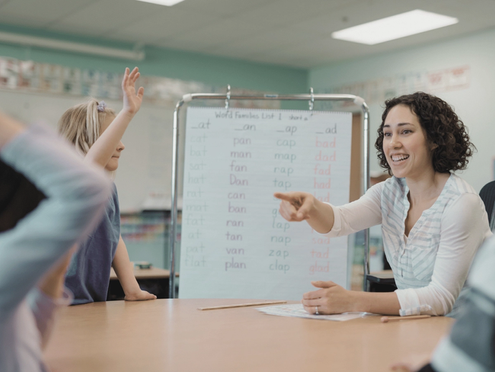Introduction
When looking for a school for your children, you may be faced with an important decision: do you send your child to a state school, or to an independent school? The choice can be a daunting one, especially when considering factors such as financial factors, proximity, preparation for further education, class size, and extracurricular activities.
In the UK, state schools are free to attend and are funded by the government, whereas independent schools are paid for by parents and alumni. However, the differences between the two types of schools go deeper than just funding. In this blog, we will explore how each type of school can benefit your child, and help you figure out which school is best for you and your child.
What is a state school?
In England and Wales, over 90% of learners will attend a state school. Parents do not have to pay for their children to attend: instead, state schools are funded through taxes and organised by multi-academy trusts or local authorities. The only situations in which a state school may ask for financial contributions from parents is for school trips or charity events.
State schools are mostly mixed gender and take students depending on catchment area - this means that your child is most likely to be accepted into the school you live closest to, and are unable to attend schools which are too far away except in specific extenuating circumstances.
In primary state schools, learners will likely work in the same group throughout the day, and one teacher will be responsible for the work they do.
There are two distinct types of state secondary school. The first type of state school is the comprehensive school, which around 88% of learners in England currently attend. Comprehensive state schools take children of all abilities and provide a range of education for those aged between 11 and 16. In Scotland and Wales, this is the only type of state secondary school.
The second kind of state secondary school is the grammar school, or selective state school, which offer places to learners after a test of ability (usually the eleven-plus). Grammar schools are usually single-sex. Not every county in the UK offers grammar school education, but these schools can be found in Northern Ireland and some counties in England, such as Lincolnshire and Kent. These schools follow the National Curriculum and do not charge fees to attend.
If your child passes the admission test, grammar schools are sometimes seen to be the “best of both worlds”, as students will be surrounded by those of similar academic ability. However, it’s important to acknowledge the potential pros and cons of your learner attending a school where every student is equally gifted versus a more diverse student cohort.
What is an independent school?
Around 7% of children in England go to independent schools, also known as private and public schools. Parents and guardians pay for their children to attend, and these schools do not receive any funding from the government. Instead, funding comes from either fees or donations. Independent schools are run by a board of governors or trustees and, as they are independent from the government, they are not required to follow the National Curriculum.
There are many types of independent schools. Nurseries are the earliest private school and teach those from 2 to 4. Pre-preparatory schools teach learners aged 3 to 7 and help prepare them for the next stage in their education. A preparatory school (for ages 7 to 11 or 13) then prepares learners to attend a public school. A public school is a secondary school which is run independently, rather than by the government.
What are the differences between state and independent schools?
Funding
Independent schools are funded by fees charged to parents, or through donations from alumni, unlike state schools which are funded by the government. The Independent found that the average private school fee was £13,600 per learner annually, whereas state schools spent £7,100 per student during the same period.
Although the funding of independent schools primarily comes from parents, many offer bursaries and scholarships depending on a learner’s ability or means. This means many students can access independent education without concerns about payment.
Entry requirements
Most state schools do not have entry requirements, and only require that their students live within the catchment area of the school. Grammar schools, unlike other state schools, require learners to pass an exam before they can attend. This exam is usually the eleven-plus.
Most independent schools consider entrance exams a core part of the application process and require their applicants to pass the exam before they can attend. Some of the schools use the eleven-plus in the same way as grammar schools, and others use the thirteen-plus taken in Year 8. Your child could also be required to sit the Common Entrance (CE) exams at 11 or 13; many private schools advise attending a preparatory school beforehand to give learners the knowledge required to pass.
Curriculum
As state schools are funded by the government, they are required to follow the National Curriculum. The National Curriculum ensures all students learn the same things and establishes the standards learners should reach in each subject. Some state schools, such as academies and free schools, can vary from the National Curriculum and introduce different subjects and topics in the classroom.
Independent schools do not follow the National Curriculum and often have a greater range of subjects for learners to choose from. This can range from anything to Psychology, Music, Classics or Latin. Independent schools also offer a broader range of extracurricular activities to help students learn beyond the classroom from an early age.
Class size
The average class size varies significantly between each type of school. Independent primary schools have 16 learners compared to 27 in state primary schools. Secondary schools show similar numbers, with 15 learners in private secondary schools compared to 22 in state schools.
Smaller class sizes can have many benefits. They allow learners to interact more directly with teachers, which allows their learning to be tailored towards their strengths and weaknesses. Knowing their class more intimately can also increase class participation and create fewer distractions, encouraging further engagement with each subject. Teaching can be more personalised, as teachers can dedicate more time to each learner.
However, as state schools accept students from a wider range of socioeconomic backgrounds, learners will experience a greater level of social diversity. These classrooms prevent the insular environment seen in some private schools.
Does school type have an impact on future success?
When deciding between state schools and private schools, you might be most concerned about how they affect the performance and potential of your child.
The Independent has found that over 60% of students at Oxford and Cambridge attended private or grammar schools. However, this does not mean that state schools are not successful in comparison. During the last decade, state schools have seen significant improvements in A-level results. Additionally, the Oxbridge Admissions team has been working to admit students from a greater range of academic and socioeconomic backgrounds.
It’s also important to acknowledge that when considering the effects of the attainment gap on learners’ success, the majority of learners who attend independent schooling come from advantaged backgrounds, and therefore are not impacted by the negative effects of the attainment gap. This begs the question: do learners from independent schools achieve better results because the teaching is superior, or is it due to advantages given to them from their socioeconomic background?
Many independent schools aim to place their high-achieving students in top universities. Some schools provide additional education, such as the International Baccalaureate Diploma or Cambridge Pre-U qualifications, depending on a student’s academic abilities and their interest in attending university. These exams can give learners an advantage when applying for top universities.
However, state schools can be just as competitive as independent schools, and many are pushing to build a stronger work ethic to encourage their students to achieve as highly as possible. Additionally, a study conducted by the University College London found that students are as happy in state schools as they are in independent schools; participants in the study also reported similar life satisfaction during their early adulthoods.
How do you choose the right school for your child?
Whether it’s independent, grammar or state, every school has a unique educational ethos and a range of extracurricular activities, so the search for the right school might not be as simple as choosing either state or independent.
Every child is different, and it is vital to provide an education which suits their interests, ability, and needs. School open days can be an excellent way of seeing each school and provides an opportunity to ask any questions about them.
It is also important to recognise what your highest priority is. As independent schools have a more varied curriculum, you may want to send your child to a school which encourages their artistic side, or maybe your priorities rest on helping them pursue higher education. Instead, you may want to send your child to single-sex school, or you may want to send them to a co-educational school where boys and girls share each classroom. As well as this, it’s important to consider whether the potential benefits of independent schooling are worth the additional cost - or whether it’s even a viable option for your family. The vast majority of families in the UK simply cannot afford independent education, and this shouldn’t have an impact on the quality of education their child receives.
Every school provides something unique, so it is crucial to look for a school in which your child receives the best education which meets their specific educational needs.



